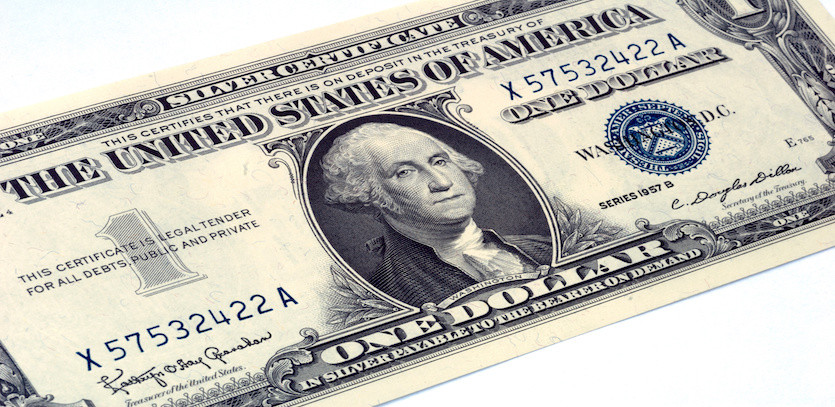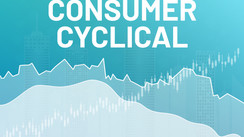Exploring the Worth of U.S. Silver Certificate Dollar Bills Today
The Silver Certificate Dollar Bill holds a remarkable spot in American monetary history, representing an era where one could exchange this unique legal tender for an equivalent amount of silver. Issued by the U.S. federal government in the late 19th century, these certificates were a practical alternative for investors to own silver without needing to purchase the actual precious metal.
Though these certificates no longer hold their weight in silver, they remain legal tender at face value. As collectible items, their market value often exceeds their face value. This captivating tale of financial evolution begins in the 1860s when the U.S. emerged as a leading global producer of silver, leading to the creation of a new monetary system inclusive of the Silver Certificate. Let's explore this currency's history and current worth.
Delving into the History of Silver Certificate Dollar Bills
The often overlooked provisions of the Coinage Act of 1873 played a significant role in this narrative, ceasing the free coining of silver and pushing the U.S. towards a gold standard. Although silver coins remained legal tender, their circulation diminished. The Bland-Allison Act of 1878 authorized the issuance of Silver Certificates, enabling the deposit of silver coins at the U.S. Treasury and subsequent exchange for these certificates. This substitute money could also be redeemed for an equivalent amount of silver.
Similar practices were adopted by countries like China, Colombia, Costa Rica, Ethiopia, Morocco, Panama, and the Netherlands. However, with the Revised Statutes Section 3568 a year later, silver coins were no longer recognized as legal tender for amounts exceeding five dollars.
The Rise and Fall of Silver Dollar Certificates
The late 19th century witnessed the resurgence of silver's relevance due to increasing discoveries of silver deposits. This era saw the U.S. silver production rise from less than 1% of the world's total to a staggering 40% by the 1870s. The Bland-Allison Act reintroduced silver's free coinage, necessitating government procurement and minting of silver.
Although the certificates are no longer exchangeable for silver coins, their historical significance and ephemeral status as legal tender contribute to their collectability and value.
The Journey to Obsolescence
The Silver Purchase Act's repeal through PL88-36 in 1963 by the House of Representatives signaled the beginning of the end for Silver Certificates. The looming shortage of silver bullion fueled this decision. Certificate holders could exchange their certificates for silver dollar coins for a limited period until March 1964. Post this, certificates were redeemable for silver granules for the next four years. The redemption period for Silver Certificates concluded in June 1968.
The Various Denominations of Silver Certificates
Large and small are terms often used to classify Silver Certificates. Large-sized certificates were issued from 1878 to 1923, with a value ranging between $1 and $1,000. In contrast, the small-sized certificates issued post-1928, mimicked the size of modern U.S. currency and bore portraits of renowned figures like George Washington, Abraham Lincoln, or Alexander Hamilton. Interestingly, a certificate's value is not determined by its size or denomination.
The Worth of Silver Certificates in Present Times
A certificate's value is dictated by factors like its condition, year of issuance, and its attractiveness as a collector's item. Features like the certificate grade (based on the Sheldon numerical scale), star marks in the serial number, or errors on the face of the bill, all add to its market value.
The Allure of Antique Silver Dollar Certificates
Silver’s influence started to become more prominent as the Comstock lode and other deposits developed. This occurred as Congress was exploring avenues to expand the monetary base. Remarkably, the U.S. transitioned from manufacturing less than 1% of the globe's silver to almost 20% by the 1860s and 40% by the 1870s.
The Bland-Allison Act brought back the free coinage of silver. It mandated the government to purchase and coin silver dollars worth between $2 million and $4 million each month, although no more than $2 million was ever purchased per month.
Despite the fact that these certificates are no longer redeemable for silver coins, their historic significance lies in the economic influence they wielded, as well as their brief period as recognized legal tender.
Phasing Out
In 1963, the House of Representatives passed PL88-36, repealing the Silver Purchase Act and dictating the retirement of $1 silver certificates. This act was a response to the anticipated silver bullion shortage.
For approximately 10 months, certificate holders could exchange their notes for silver dollar coins. In March 1964, Treasury Secretary C. Douglas Dillon halted the coin issuance, and for the next four years, certificates could be redeemed for silver granules. The redemption period for silver certificates ended in June 1968.
Diversity in Silver Certificate Denominations
Silver certificates are commonly classified into large and small certificates. Those released from 1878 to 1923 were physically larger, often measuring over seven inches long and three inches wide. The value of these large-sized silver certificates, issued up until 1923, ranged between $1 and $1,000. The designs varied greatly, featuring former presidents, first ladies, vice presidents, founding fathers, and other significant individuals.
In 1928, U.S. banknotes underwent a redesign, and up until the discontinuation of issuance in 1964, the silver certificates issued were the same size as today's U.S. currency—6.4 inches long and 2.6 inches wide. All small-sized silver certificates feature the portraits of George Washington, Abraham Lincoln, or Alexander Hamilton. However, a certificate's value is not directly correlated to its size or denomination.
Current Worth of Silver Certificates
The value of a silver dollar certificate today depends on the condition and year of issuance. Although redeeming a silver dollar certificate for actual silver is no longer possible, these certificates remain technically legal tender and can be swapped for a Federal Reserve note.
However, the true value of a silver certificate lies in its collectability. These certificates have evolved into collectibles, and certificate collectors will pay more than face value depending on the rarity of the print.
Factors That Increase Value
The worth of each silver certificate depends on several variables. The grading of the certificate is one of the biggest determinants of its value. Most silver certificates are given a grade on the Sheldon numerical scale, ranging from one to 70, with 70 indicating a certificate in mint condition.
The numerical grade is matched with an adjectival grade, indicating the condition to be one of the following: good, very good, fine, very fine, extremely fine, almost uncirculated, or crisp uncirculated.
Apart from the grade, certain features on specific silver certificates enhance their value to collectors. Generally, a silver certificate with a star in the serial number or an error on the face of the bill will be worth more than a silver certificate from the same year, grade, and denomination without these features.
Star notes from 1957 are commonplace, and some collectors won't purchase them. Errors may include folding, cutting, or inking mistakes. Moreover, unique and fascinating certificates can sometimes fetch prices much higher than their grade would suggest.
In conclusion, the market value of silver dollar certificates today often exceeds their face value. While they are no longer redeemable for silver, their historical significance and inherent rarity keep them a valuable item for collectors. These certificates represent a fascinating chapter in the history of American money and continue to intrigue numismatists worldwide.





